What Do the Numbers on a Disc Golf Disc Mean?
What Do the Numbers on a Disc Golf Disc Mean?
A Beginner's Guide to "Flight Numbers"

The following article is made possible through a paid partnership with Disc Golf Deals USA.
For those new to disc golf, one of the most frequently asked disc golf related questions is, "What do the numbers on a disc golf disc mean?".
You’ve come to the right place.
Disc golf flight numbers are the key to understanding how a disc will fly without having to throw it first. They were introduced by Innova's founder Dave Dunipace over two decades ago in the 1990s. Since then, they have become a necessity in the times of online stores and purchases. As a result, manufacturers are focusing on the accuracy of their flight ratings more than ever.
As a new disc golfer, it is crucial to understand the numbers on a golf disc in order to select beginner-friendly discs. I'm Brad, a content creator/disc golfer at Disc Golf Deals USA, and I’m here to explain disc golf flight numbers to you in an easy-to-understand way!
What Do the Four Numbers on a Disc Mean?
When I first started chucking plastic the numbers on a disc golf disc were a mysterious code to be cracked. In reality, the numbers are quite straightforward. We have to give some credit to Dave for creating such a simple yet robust system! Everyone still uses disc golf flight ratings to this day.
The first number is a disc's speed rating. The second is its glide rating. The third and fourth are turn and fade respectively. We'll dig deeper into each one of these numbers in the next couple of sections.
Speed
Do you feel the need for speed? Many a new disc golfer has gone out on his or her first shopping trip and bought the fastest driver they could find. Much to their disappointment the disc does not magically travel further, but rather seems to fall out of the sky in a leftward direction. It’s almost as if the putters are flying further.
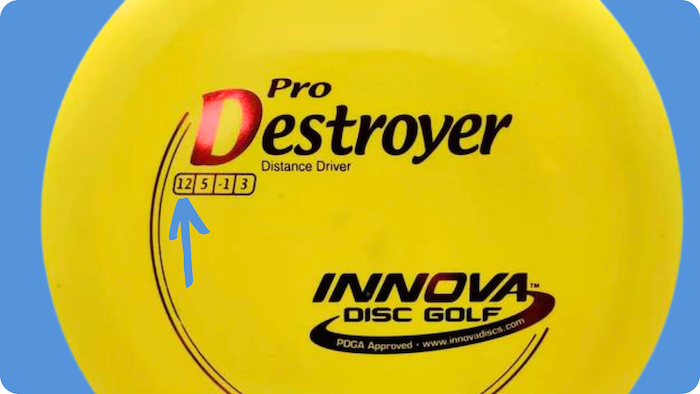
The speed of a disc is determined by the width of the rim. Distance drivers are low-profile discs with wide rims, while putters are deeper with thinner rims. These sleek aerodynamic drivers travel through the air faster, but you have to throw them faster to get the full flight!
Speed ratings range from 1 to 14. Putters are rated 1 to 3, midrange discs are 4 to 5, Fairway drivers are 6 to 8, and distance drivers are 9 to 14. Some manufacturers like to label 9 to 11 speed discs as control drivers.
The reality is that throwing fast discs like drivers before you have sufficient arm speed will make your shots shorter, and less accurate. Your shots will fade out early. (Don't worry if you're unsure of the meaning of fade, we'll cover it later.)
Glide
The second number in the flight rating system is the amount of glide a disc has. When a disc has more glide it will travel further with less effort from the player. On the flip side discs with less glide are easier to control on windy days.
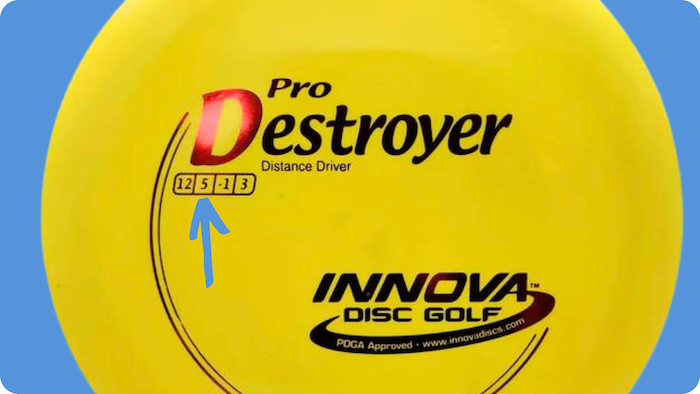
Glide ratings can range from 1 all the way up to 7. The average rating for glide is 4 to 5 for mids, fairways, and drivers. For some reason, manufacturers always rate the glide on their putters lower, even though they generally glide the most given their shorter flights! For putters, the average glide rating is about 3.
As a beginner throwing glidier discs, a disc with a high glide rating is a great way to increase the distance of your shots without compromising on your accuracy.! As you advance in the sport you will find yourself moving to lower glide discs as you begin to prioritize control over distance.
A recently released disc, the MVP Glitch, has a glide rating of 7! Check it out here at Disc Golf Deals.
Turn
Now things start to get interesting! Turn is what occurs in the high-speed portion of a disc's flight, right after you've released it. When throwing right-handed backhand shots this will be a rightward movement. It'll be leftward for forehands and lefty backhands.
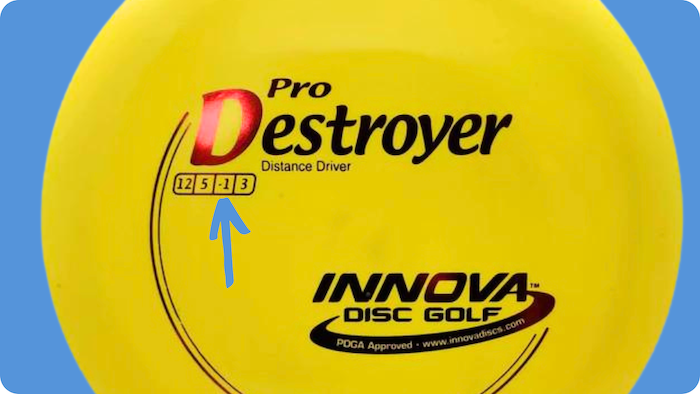
Discs generally have a turn rating of 0 to -7, although some really overstable discs have positive ratings! Take note that when you throw a disc slower than it is rated to be thrown you will get less turn! That is the reason our new disc golfer's shot faded out so early. If you throw a disc faster than its rating it will turn more, or be more understable.
As a beginner, the key to distance is mastering the S flight. This is when the turn and fade movements draw an S shape in the air. For this reason, we recommend discs with a high negative turn rating. These will make it easier for you to throw S-shaped shots.
Fade
Fade is the final portion of a disc's flight. It occurs when the disc loses momentum and spin. It's the fourth and final number on the disc. Fade ratings can range from 0 to 5.
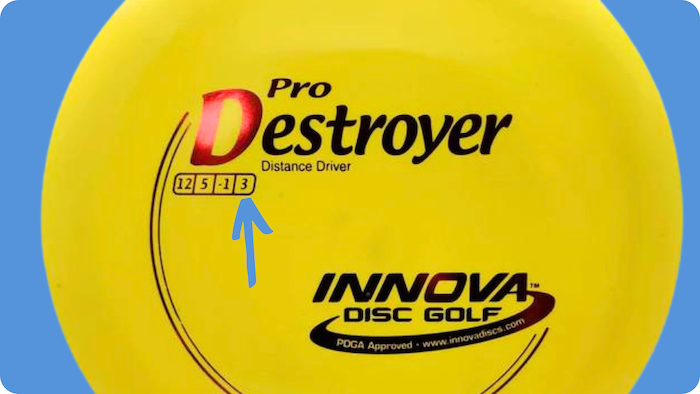
Fade is a leftward motion for right-handed backhand shots that brings the disc to the ground. It's a movement to the right for forehands and lefty throwers.
Discs that have more fade are harder to throw. They need more power, accuracy, and control to prevent an early crash landing! Pro players use these discs because they have the power to throw them and love their reliable flight path. Overstable discs are also more reliable in the wind.
What is an Overstable Disc?
Overstable discs have a higher fade rating. They fight out of the turn stage of their flight much faster and pull to the ground.
High-speed discs like drivers and fairways will fade more than their rating if you throw them with too little power. This does not mean you should throw as hard as you can! Disc golf is a little more complex than that, which is why it's such a great sport! Rather, consider using slower-speed discs with a negative TURN rating, and slow your throwing down. This allows you to correct your form, bringing you accuracy, control, and in the long run much more distance!
Throwing these slower-speed “understable” discs is the fastest way to improve your disc golf game! Throwing high-speed discs before you have the arm for them will create a lot of bad habits that will have to painstakingly be undone! Trust me, I had that problem myself!
So, what is an Understable Disc?
Understable discs have high negative turn ratings. They move to the right in the early stages of a right-handed backhand flight path. These are the best discs to begin with in disc golf.
Don't be fooled by the "beginner" tag! Understable discs are awesome weapons that allow you to throw amazing lines. I promise you they won't rot in your basement once your technique has improved!
Can you figure out yet which of these discs is overstable and which is understable?
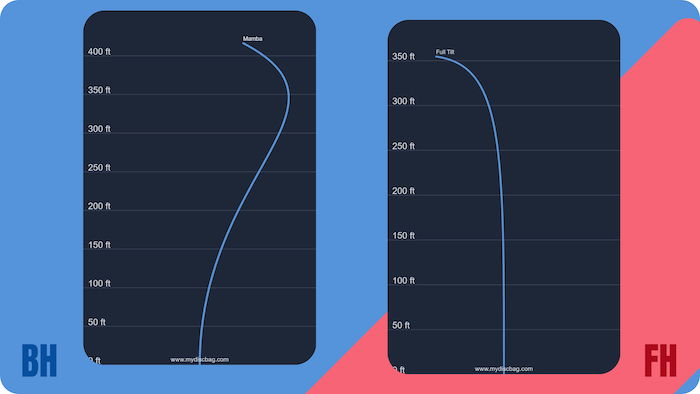
Which Discs Should Beginners Be Using?
I've said it a few times and I'll repeat it. Beginners should stick to understable midranges and putters. As your form progresses you can take on faster and more overstable discs! Here are a couple of discs that match those criteria:
- Innova Rollo
- Discraft Buzzz
- Innova Aviar
- MVP Glitch
- Axiom Discs Pitch
- Axiom Discs Proxy
- Latitude 64 Fuse
- Discraft Archer
- Innova Stingray
As you can see, we're already spoiled for choice, and that's just scratching the surface of all the high-glide, understable mids and putters out there!
The next time you go out to throw some discs, take a look at their flight numbers and see if they fly accordingly. Test out any understable mids and putters and see if you can achieve the coveted S shape!
Happy throwing! Enjoy the journey as you become a better disc thrower and a better disc golfer!
- posted 6 hours ago
- posted 1 day ago
- posted 1 day ago
- posted 3 days ago
- posted 4 days ago
- 1 of 669
- next ›

Submit a comment